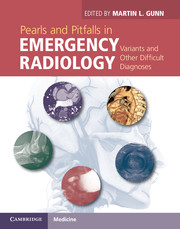Book contents
- Frontmatter
- Contents
- List of contributors
- Preface
- Acknowledgments
- Section 1 Brain, head, and neck
- Section 2 Spine
- Section 3 Thorax
- Case 30 Pseudopneumomediastinum
- Case 31 Traumatic pneumomediastinum without aerodigestive injury
- Case 32 Pseudopneumothorax
- Case 33 Subcutaneous emphysema and mimickers
- Case 34 Tracheal injury
- Case 35 Pulmonary contusion and laceration
- Case 36 Sternoclavicular dislocation
- Case 37 Boerhaave syndrome
- Case 38 Variants and hernias of the diaphragm simulating injury
- Section 4 Cardiovascular
- Section 5 Abdomen
- Section 6 Pelvis
- Section 7 Musculoskeletal
- Section 8 Pediatrics
- Index
- References
Case 37 - Boerhaave syndrome
from Section 3 - Thorax
Published online by Cambridge University Press: 05 March 2013
- Frontmatter
- Contents
- List of contributors
- Preface
- Acknowledgments
- Section 1 Brain, head, and neck
- Section 2 Spine
- Section 3 Thorax
- Case 30 Pseudopneumomediastinum
- Case 31 Traumatic pneumomediastinum without aerodigestive injury
- Case 32 Pseudopneumothorax
- Case 33 Subcutaneous emphysema and mimickers
- Case 34 Tracheal injury
- Case 35 Pulmonary contusion and laceration
- Case 36 Sternoclavicular dislocation
- Case 37 Boerhaave syndrome
- Case 38 Variants and hernias of the diaphragm simulating injury
- Section 4 Cardiovascular
- Section 5 Abdomen
- Section 6 Pelvis
- Section 7 Musculoskeletal
- Section 8 Pediatrics
- Index
- References
Summary
Imaging description
Boerhaave syndrome represents the clinical syndrome associated with spontaneous esophageal rupture from retching and vomiting. The factor most often associated with a high mortality is a delay in diagnosis as this can result in significant mediastinal infection and tissue destruction [1–3].
Surgical repair remains the mainstay of therapy. However, there is increasing evidence that spontaneous esophageal rupture can be managed successfully conservatively, or with endoscopic stenting, in carefully selected patients who have an early diagnosis [2].
Although radiographic findings may be non-specific or subtle, early identification of these findings and a low threshold for further investigation in the absence of definitive radiographic findings is important.
Rupture of the esophagus from Boerhaave syndrome tends to occur in the distal left posterior wall. This will result in the classic radiographic findings of pneumomediastinum, left pneumothorax, and left pleural effusion (Figure 37.1) [4]. However, the effusion and pneumothorax are not always leftsided, and the chest radiograph may be normal [5]. Evidence of pneumomediastinum may include a white line adjacent to the mediastinum, linear gas in the mediastinal or cervical soft tissues, a continuous diaphragm sign, and a “V”-shaped air lucency in the left lower mediastinum (of Naclerio) [6].
- Type
- Chapter
- Information
- Pearls and Pitfalls in Emergency RadiologyVariants and Other Difficult Diagnoses, pp. 125 - 127Publisher: Cambridge University PressPrint publication year: 2013

